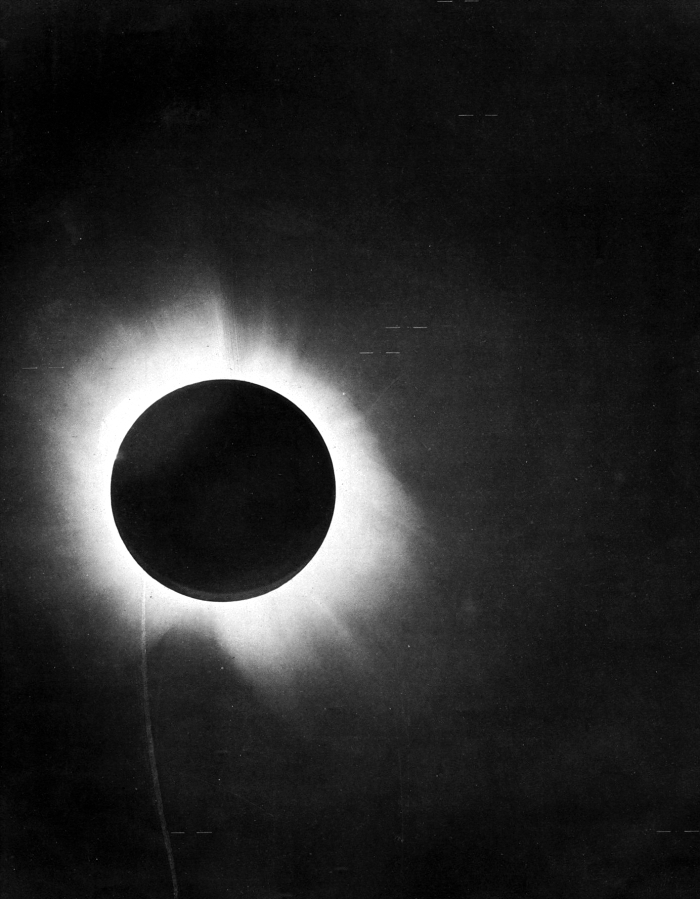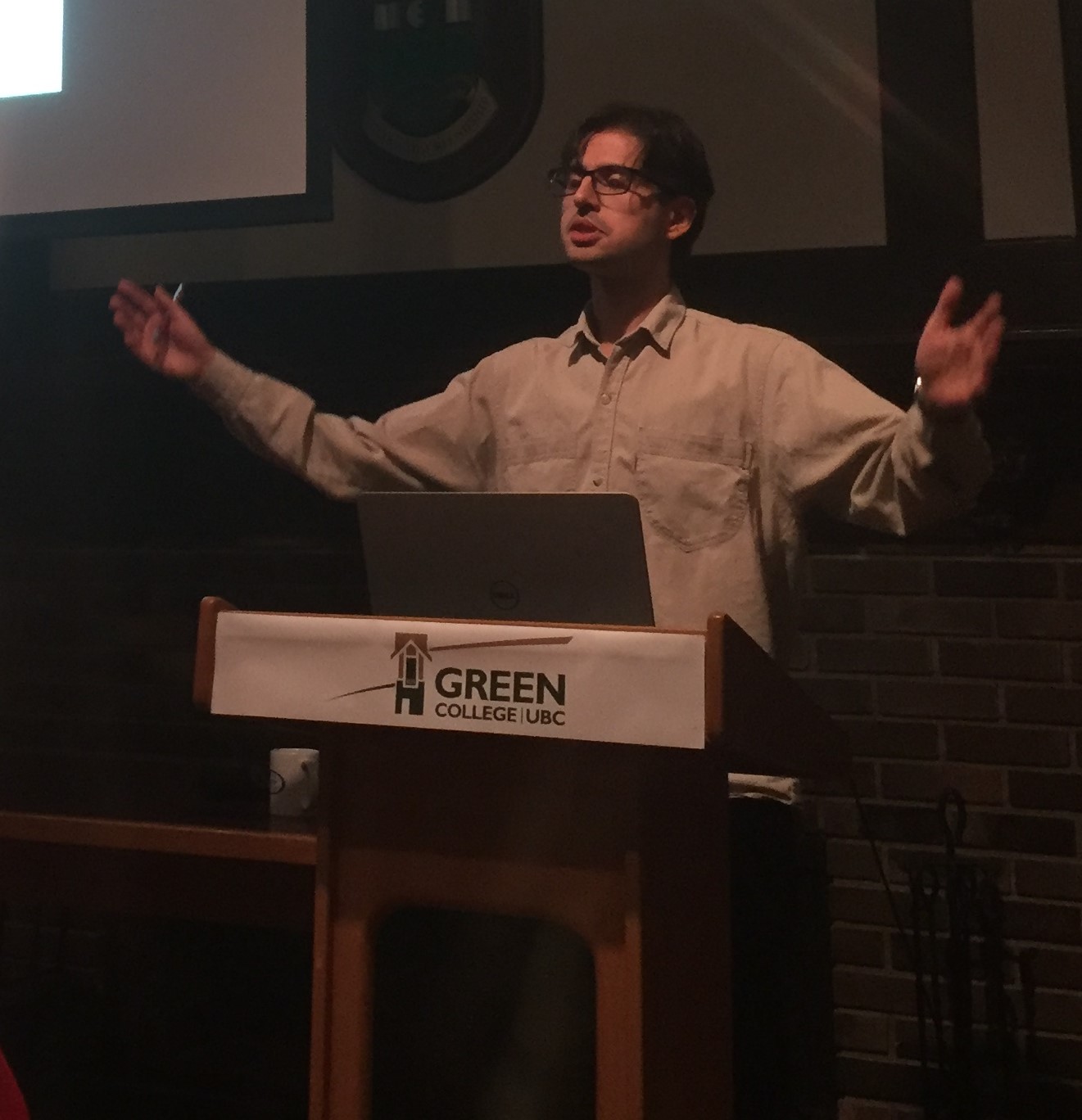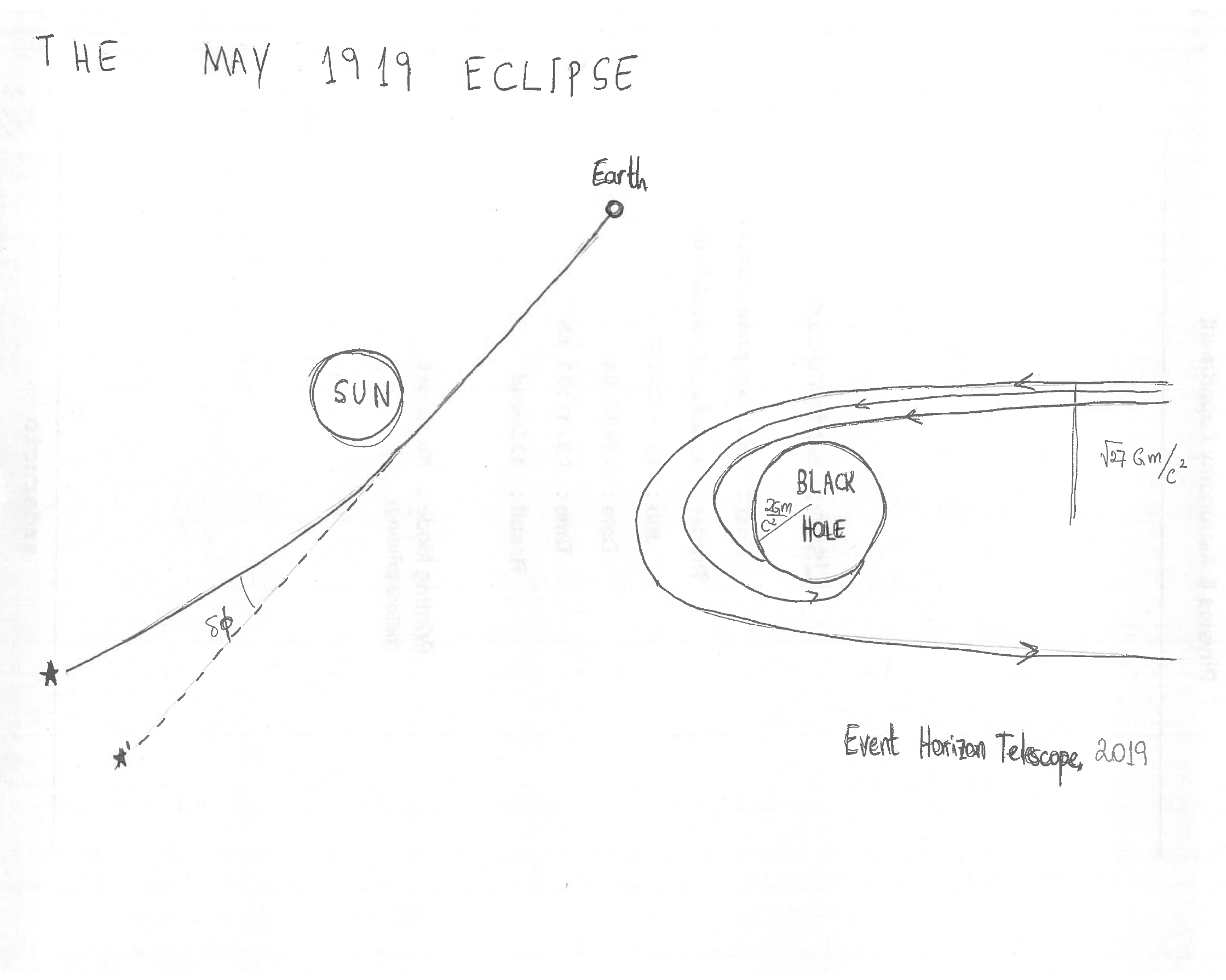A Dynamic Universe

[Eddington’s photograph of a solar eclipse in F. W. Dyson, A. S. Eddington, and C. Davidson, “A Determination of the Deflection of Light by the Sun's Gravitational Field, from Observations Made at the Total Eclipse of May 29, 1919,” Philosophical Transactions of the Royal Society of London. Series A, Containing Papers of a Mathematical or Physical Character (1920): 291-333, on 332. Source: Wikipedia]
In 1911, Albert Einstein published a paper that estimated the value of the gravitational deflection of starlight passing near the sun. Foiled in previous years by the weather, observations of the total solar eclipse in May 1919 proved Einstein’s theory of general relativity. Despite the fact that his initial predictions were inaccurate, the results from the Eddington experiment of 1919 led to worldwide fame for Einstein, and his theories continue to be used in modern physics 100 years on.
Green College Resident Member, Bruno Arderucio, explained in his talk the continued importance of the Eddington expedition. Not only did it prove Einstein’s theory of general relativity, but it had further consequences in the academy. From this theory came suggestion that the universe could not be static, and that it must have had a beginning.

[Bruno presenting at Green College, October 7th 2019]
The experiment itself was organised by British astronomers Frank Watson Dyson and Arthur Stanley Eddington, and was carried out at two locations: Principe Island (off the west coast of Africa), and Sobral (northeast Brazil).
Using hand-drawn diagrams, Bruno gave us an insight into the history of general relativity, going back to Galileo, through Einstein and Eddington, and into the present day where research into gravitation waves continues. His overview was an important reminder that these ground-breaking discoveries take years, even centuries to develop. We may be taught to memorise an individual date, an individual name - Arthur Stanley Eddington on the 29th May 1919 for example - but we forget the decades of work and the multitude of minds that contribute to breakthrough discoveries. Taking a step back to observe the bigger picture offers a whole new perspective.

[Bruno’s hand-drawn slides]
For more background on the Eddington Experiment see A hundred years of the first experimental test of general relativity.
Mairi Stirling Hill
Department of English Language and Literature, UBC
